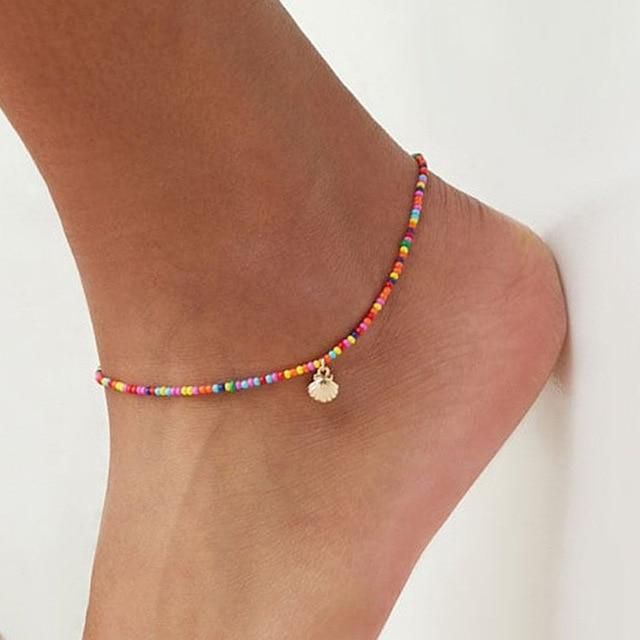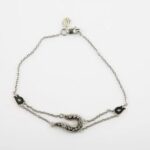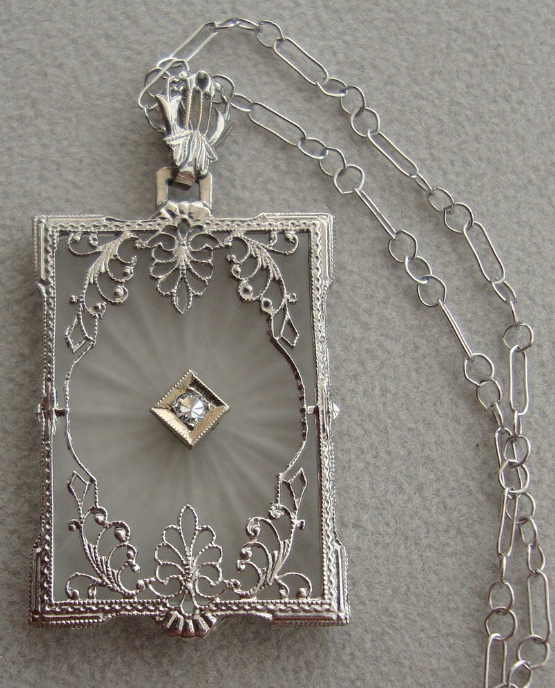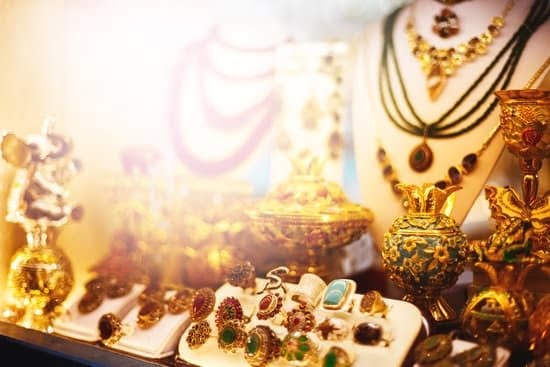India, a country known for its rich cultural heritage and deep appreciation for luxury goods, presents a fascinating opportunity for sellers of diamond jewelry. With a growing economy, evolving consumer preferences, and a rising middle class with disposable income, the demand for diamond jewelry in India has seen significant growth in recent years.
This article explores the potential of the Indian diamond jewelry market and delves into various aspects such as cultural significance, legal landscape, market trends, and effective strategies to successfully enter this lucrative market.
The allure of diamonds has stood the test of time and transcends borders. However, it is in India where these exquisite gemstones hold special cultural significance and are treasured as symbols of timeless beauty, wealth, and status.
As the world’s largest consumer and importer of gold jewelry, India has also emerged as a promising market for diamond jewelry due to changing fashion trends and shifting consumer preferences. The increasing affinity towards modern designs and Western aesthetics has led to an immense opportunity for sellers to tap into this growing market.
To fully understand the Indian diamond jewelry market and cater to its unique demands, it is vital to explore its cultural significance and preferences. Diamonds hold deep sentimental value in Indian culture and are often associated with special occasions such as weddings or festivals. Moreover, Indians have specific preferences when it comes to cut, color, clarity, carat weight (known as the 4Cs), making it imperative for sellers to understand these nuances in order to effectively penetrate this dynamic market.
In order to succeed in selling diamond jewelry in India, sellers need to navigate through numerous challenges while also capitalizing on opportunities presented by the legal and regulatory landscape. This includes considerations such as import duties on diamonds, certification requirements, hallmarking regulations, tax implications, and intellectual property protection.
By understanding these complexities alongside analyzing the competition and market trends from key players in the industry within India’s distinct demographics and geographical regions allows sellers to devise effective entry strategies that drive success in this vibrant and ever-growing market.
The Growing Demand for Diamond Jewelry in India
The demand for diamond jewelry in India has seen remarkable growth in recent years, making it a promising market for sellers. With its large consumer base and increasing disposable income, India presents a lucrative opportunity for those in the diamond jewelry industry. This section will delve into the factors contributing to the growing demand and why selling diamond jewelry in India can be highly profitable.
One of the key drivers of the increasing demand for diamond jewelry in India is the rising middle class. As more Indian households enter this segment, their purchasing power and desire for luxury goods like diamonds have substantially increased. The growing affluence of this demographic has led to an upsurge in consumer spending on high-value items, including diamond jewelry.
Another factor fueling the demand is the cultural significance and tradition associated with wearing diamonds in India. Diamonds hold significant importance as symbols of wealth, status, and love, often worn during special occasions such as weddings and festivals. The deep-rooted cultural connection to diamonds has translated into a sustained demand throughout generations.
To tap into this lucrative market, sellers need to understand the preferences of Indian consumers when it comes to diamond jewelry. Indians generally place great emphasis on factors such as color, cut, clarity, and carat weight (known as the four Cs) when choosing diamonds. They have a particular affinity for larger stones with exceptional clarity and color grading. Additionally, traditional designs with intricate craftsmanship are highly valued by Indian customers.
To cater to this growing demand and capitalize on the opportunity presented by the Indian market, sellers must carefully study consumer preferences and adapt their product offerings accordingly. By offering a range of products that satisfy both traditional tastes and latest fashion trends while ensuring high quality standards, sellers can establish themselves as reliable sources for diamond jewelry in India.
Understanding the Indian Diamond Jewelry Market
India has a rich cultural heritage, and this extends to the realm of jewelry as well. Diamonds hold a special place in Indian culture, symbolizing wealth, prosperity, and status. Understanding the cultural significance and preferences of the Indian market is crucial for sellers looking to enter this lucrative industry.
In Indian culture, diamonds are not just seen as beautiful pieces of jewelry but also as investments that hold their value over time. They are often passed down through generations and hold sentimental value for families. This cultural significance makes diamond jewelry an important purchase for many Indians, especially during key life events such as weddings and anniversaries.
When it comes to design preferences, Indians have a penchant for intricate and ornate jewelry styles. Traditional designs featuring motifs like peacocks, lotus flowers, and gods and goddesses are highly popular. Additionally, the use of colored gemstones alongside diamonds is common in Indian jewelry.
To effectively cater to the Indian market, sellers should consider these cultural factors when designing their products and marketing strategies. Understanding the importance of diamonds in family traditions can be leveraged by emphasizing the longevity and sentimentality of diamond jewelry. Offering customization options that allow customers to personalize their pieces can also appeal to the Indian preference for individuality.
Furthermore, it is important for sellers to stay connected with evolving fashion trends in India. While traditional designs continue to dominate the market, there is a growing demand for contemporary and fusion designs that blend traditional elements with modern aesthetics. By keeping up with these trends and delivering a diverse range of designs that cater to various customer preferences, sellers can tap into the full potential of the Indian diamond jewelry market.
- Understand the cultural significance of diamonds in Indian society
- Cater to traditional design preferences while also offering contemporary options
- Stay updated with fashion trends in India
Challenges and Opportunities
One of the crucial aspects that sellers need to consider when entering the Indian diamond jewelry market is the legal and regulatory landscape. This section will explore the challenges and opportunities that arise from these factors.
Firstly, it is important to note that India has various laws in place to regulate the sale of diamond jewelry. The Bureau of Indian Standards (BIS) has established guidelines for marking and certification of all types of jewelry, including diamonds. These standards ensure that consumers receive genuine and quality products. Therefore, sellers must comply with BIS regulations and obtain certification to sell diamond jewelry in India.
In addition to BIS regulations, import and export laws also affect sellers entering the Indian market. Import duties on diamonds vary depending on their type and value, so understanding these customs procedures is crucial for pricing strategies. Sellers should also be aware of any free trade agreements or preferential tariffs that could provide opportunities for cost savings.
While navigating the legal framework can be challenging, there are also significant opportunities for sellers within this landscape. For example, India has a strong domestic manufacturing industry for diamonds, making it an attractive sourcing destination for both raw materials and finished products. Establishing partnerships with local manufacturers can not only ensure competitive pricing but also streamline the supply chain process.
Key Players in the Indian Diamond Jewelry Market
The Indian diamond jewelry market is a highly competitive industry, with numerous key players vying for market share. Analyzing the competition and market trends is crucial for sellers looking to enter this lucrative market successfully.
Competition in the Indian Diamond Jewelry Market
The Indian diamond jewelry market is currently dominated by both established domestic brands and international players. Domestic brands have a strong foothold due to their understanding of local preferences and cultural significance attached to diamonds. However, international brands bring their expertise and brand reputation from global markets, making competition fierce.
Market Trends in the Indian Diamond Jewelry Industry
Several key market trends are shaping the dynamics of the Indian diamond jewelry industry. One trend is the increasing demand for customized diamond jewelry pieces that cater to individual tastes and preferences. Consumers are seeking unique designs that reflect their personal style while still maintaining traditional elements.
Another notable trend is the rising popularity of lab-grown diamonds in India. These diamonds are chemically identical to natural diamonds but are created in a laboratory under controlled conditions. The demand for lab-grown diamonds has been growing due to factors such as ethical considerations, affordability, and environmental sustainability.
Additionally, online sales of diamond jewelry have witnessed significant growth in recent years. E-commerce platforms provide consumers with convenience, a wide range of options, competitive prices, and access to global brands. As internet penetration continues to increase across India, online sales are expected to rise further.
Opportunities for Sellers
Understanding the competitive landscape and market trends presents opportunities for sellers in the Indian diamond jewelry market. New entrants can capitalize on consumer demand for personalized designs by offering customization services or collaborating with local artisans known for their craftsmanship.
Moreover, embracing technology and digital platforms can help sellers tap into the growing online sales segment. Investing in user-friendly websites or partnering with established e-commerce platforms can expand reach and attract online customers.
How to Successfully Enter the Indian Diamond Jewelry Market
Successfully entering the Indian diamond jewelry market requires careful planning and strategic implementation. In this section, we will explore some effective strategies, partnerships, and resources that can help sellers navigate this complex market and increase their chances of success.
Understanding the Indian Consumer
Before entering the Indian diamond jewelry market, it is crucial to gain a deep understanding of the Indian consumer. Indians value weddings and festivals as important occasions for buying and gifting jewelry, which presents a unique opportunity for sellers. Additionally, Indians have a strong preference for gold jewelry, so it is essential to position diamond jewelry as an attractive alternative or complement to gold.
Establishing Local Partnerships
Partnering with local distributors or retailers can greatly enhance your chances of success in the Indian market. These partners have extensive knowledge of local preferences, customer behavior, and distribution networks. Collaborating with established players can also help build trust and credibility among consumers who may be wary of new entrants in the market.
Utilizing Online Platforms
The rapid growth of e-commerce in India provides a significant opportunity for sellers to reach a wider audience. Setting up an online store or partnering with established e-commerce platforms can give sellers access to millions of potential customers across the country. It is important to invest in digital marketing strategies tailored to the Indian context to effectively promote your products online.
Government Initiatives and Support
The Indian government has introduced various initiatives to promote the diamond industry and attract foreign investment. Sellers should take advantage of these initiatives by staying updated on relevant policies and regulations. Additionally, seeking support from government agencies or industry associations can provide valuable resources and guidance for navigating the intricacies of doing business in India.
Successfully entering the Indian diamond jewelry market requires a comprehensive understanding of local preferences, strategic partnerships with local players, utilization of online platforms, and support from government initiatives. By adopting these strategies and leveraging available resources, sellers can increase their chances of effectively entering and establishing a strong presence in the Indian market.
Tailoring Diamond Jewelry Marketing and Sales Practices to the Indian Market
India is a unique market with its own cultural beliefs and traditions surrounding jewelry, including diamond jewelry. In order to successfully sell diamond jewelry in India, it is essential to tailor marketing and sales practices to the specific needs and preferences of Indian consumers. This section will provide tips and best practices for effectively reaching the Indian market.
One important aspect to consider when marketing and selling diamond jewelry in India is understanding the significance of jewelry in Indian culture. Jewelry holds a deep cultural value and is often seen as a symbol of wealth, status, and marital bliss. It is important to highlight these aspects in marketing campaigns and emphasize how diamond jewelry can enhance a person’s beauty, social standing, or personal relationships.
Another key consideration when entering the Indian market is recognizing the preferences of Indian consumers when it comes to diamond jewelry. Traditional designs with intricate detailing are highly valued in India, as they reflect the rich heritage and craftsmanship associated with jewelry making in the country. It is crucial to offer a wide range of designs that cater to different tastes, incorporating traditional motifs and techniques alongside modern styles.
In addition, customization options can greatly appeal to Indian customers who often seek unique pieces that represent their individuality or commemorate special occasions. Offering personalized services such as custom designing or engraving names or messages on the jewelry can be an effective way to attract customers.
| Tips for Tailoring Diamond Jewelry Marketing | Best Practices |
|---|---|
| Highlight cultural significance | Incorporate traditional designs |
| Emphasize wealth/status symbolism | Offer customization options |
| Promote beauty/relationship enhancement | Showcase craftsmanship & heritage |
Building Trust and Credibility
Establishing trust and credibility is crucial when entering the Indian diamond jewelry market. With a discerning consumer base, it is essential for sellers to focus on building a strong brand reputation to succeed in this competitive market. This section will explore some key strategies that sellers can employ to establish trust and credibility in the Indian diamond jewelry market.
One of the most effective ways to build trust is by offering high-quality products. Indian consumers prioritize quality and value when purchasing diamond jewelry, so it is important for sellers to ensure that their products meet these expectations. Working with reputable suppliers and ensuring genuine certifications for diamonds can help build trust with consumers.
In addition to quality, transparency plays a major role in establishing credibility. Sellers should provide detailed information about the diamonds they sell, including the 4Cs (carat weight, cut, color, and clarity). Transparency regarding sourcing practices can also be influential in gaining consumer trust. Providing information on ethical sourcing and sustainable practices can resonate with socially-conscious consumers, further enhancing brand reputation.
Moreover, customer reviews and testimonials have become increasingly influential in shaping consumer decisions. Positive reviews from satisfied customers can go a long way in building credibility. Sellers should actively encourage customers to share their experiences through online platforms or social media channels. Engaging with customers, addressing any issues promptly, and providing exceptional after-sales service are also crucial for building trust and establishing a loyal customer base.
Establishing Trust And Credibility: Strategies And Best Practices
| Strategies | Best Practices |
|---|---|
| Offer high-quality products | Work with reputable suppliers |
| Be transparent about diamond information | Provide detailed information about the 4Cs |
| Emphasize ethical sourcing practices | Share information on sustainable practices |
| Showcase positive customer reviews | Encourage customers to share their experiences online |
| Ensure exceptional after-sales service | Promptly address customer issues and concerns |
By implementing these strategies and best practices, sellers can effectively establish trust and credibility in the Indian diamond jewelry market. In doing so, they can differentiate themselves from their competitors and position themselves as reputable brands that Indian consumers can rely on. Building a strong brand reputation is key to unlocking success in this thriving market.
Overcoming Obstacles
When it comes to buying diamond jewelry in India, there are certain concerns and misconceptions that need to be addressed. One common concern among consumers is the issue of authenticity. Many buyers worry about the genuineness of the diamonds they purchase and fear being deceived by unethical sellers. To overcome this obstacle, it is essential for sellers to establish trust and credibility by providing certificates of authenticity from reputable gemological laboratories.
Another misconception that needs to be debunked is the belief that diamond jewelry is only for special occasions or reserved for certain social classes. In reality, diamond jewelry can be worn on a daily basis and has become increasingly popular among younger generations as a fashion statement. Sellers should emphasize the versatility of diamond jewelry and promote its use as an everyday accessory to appeal to a broader consumer base.
Price transparency is also a concern for buyers in India. Many consumers believe that diamonds are overpriced due to a lack of awareness about quality parameters and industry standards. Sellers can help address this misconception by educating consumers about the 4Cs of diamonds (carat weight, cut, clarity, and color) and explaining how these factors affect pricing.
Furthermore, sellers should implement fair pricing practices and provide clear information about the quality characteristics of their diamond jewelry. By enhancing price transparency, sellers can build trust with customers and alleviate concerns about overpaying for diamonds.
Conclusion
The Indian Diamond Jewelry market is a lucrative opportunity for sellers looking to expand their business. With a growing demand for diamond jewelry in the country, there is immense potential for growth and profitability. However, understanding the cultural significance and preferences of the Indian market is crucial for success.
Entering the Indian Diamond Jewelry market may pose some challenges due to the legal and regulatory landscape, but with careful planning and strategic partnerships, these obstacles can be overcome. Analyzing competition and market trends will also help sellers identify key players and stay ahead in the market.
To successfully enter and thrive in this market, it is important to tailor marketing and sales practices to suit the Indian audience. This involves understanding their preferences, values, and customs when it comes to purchasing diamond jewelry.
Building trust and credibility is another important aspect of establishing a strong brand reputation in India. Providing quality products, excellent customer service, and transparency in business practices will go a long way in gaining the trust of Indian consumers.
Despite concerns and misconceptions about buying diamond jewelry in India, it is essential for sellers to address these issues head-on by providing accurate information and debunking any myths surrounding the industry.
In conclusion, selling diamond jewelry in India holds great potential for growth if approached with the right strategies and resources. By understanding the cultural nuances, addressing legal requirements, analyzing competition, tailoring marketing practices, building trust, and addressing concerns of buyers, sellers can unlock the untapped potential of this thriving market.
Frequently Asked Questions
Does diamond jewellery have resale value in india?
Diamond jewelry does have resale value in India, but the value can vary depending on several factors. The quality and condition of the diamonds, as well as the overall design and craftsmanship of the jewelry, will play a significant role in determining its resale value.
Additionally, market demand for diamonds can affect their price, so it is essential to stay updated on current trends and market conditions. It is advisable to seek the guidance of a reputable jeweler or diamond expert who can evaluate your diamond and provide an accurate estimation of its resale value in India.
How can I sell my diamond in India?
Selling a diamond in India can be done through various avenues. One common option is to approach established jewelry stores or jewelers that specialize in buying pre-owned diamonds. These professionals have experience in assessing the value of diamonds and may offer a fair price based on factors such as carat weight, color, clarity, and cut grade.
Another option is to consider online platforms or classified websites that facilitate private sales between individuals looking to buy and sell diamonds. However, it is crucial to exercise caution when selling online and verify the credibility of potential buyers to ensure a safe transaction.
How to sell my diamond jewellery?
When selling diamond jewelry, there are several steps you can take to maximize your chances of getting a fair price. First, it is wise to have your diamond professionally appraised by a certified gemologist or reputable jeweler who specializes in diamond evaluations. This appraisal will help you understand the characteristics and quality of your diamond better, which will enable you to set a realistic asking price.
Next, consider where you want to sell your jewelry – options include approaching jewelry stores that buy pre-owned items or utilizing online platforms for private sales. Whichever method you choose, it is essential to conduct thorough research on potential buyers/buying platforms before engaging in any transactions. Presenting your diamond with accurate documentation (such as certificates) and highlighting its unique features can also aid in attracting potential buyers and negotiating a favorable price.

Welcome to my jewelry blog! My name is Sarah and I am the owner of this blog.
I love making jewelry and sharing my creations with others.
So whether you’re someone who loves wearing jewelry yourself or simply enjoys learning about it, be sure to check out my blog for insightful posts on everything related to this exciting topic!





